See glitzy Dubai for the over-the-top modernistic city it is.
There comes a point on visiting Dubai when one stops staring after every Ferrari, Lamborghini or Maserati roaring past and every Bentley and Rolls Royce gliding regally by.
With the Bugatti parked at the street-level entrance to the stylish Mall of the Emirates I could not help myself. I quickly joined the throng of admirers around it.
This is the point about holidaying in Dubai. It is truly the city of bling, and it is for this that it should be appreciated. To complain that it is too pretentious, too artificial, too over-the-top modernistic is like dismissing Rome for being too old.
It has none of the subtleties of the old cities of the world where it is the sense of continuity over many generations that holds the appeal. It is the in-your-face modernity of a high-rise city that within hardly more than a generation has sprung from the desert sand to replace the little trading post that used to straddle its then quietly busy Creek.
What fascinates me are the shapes of its high-rise buildings. It looks like an architects’ playground.
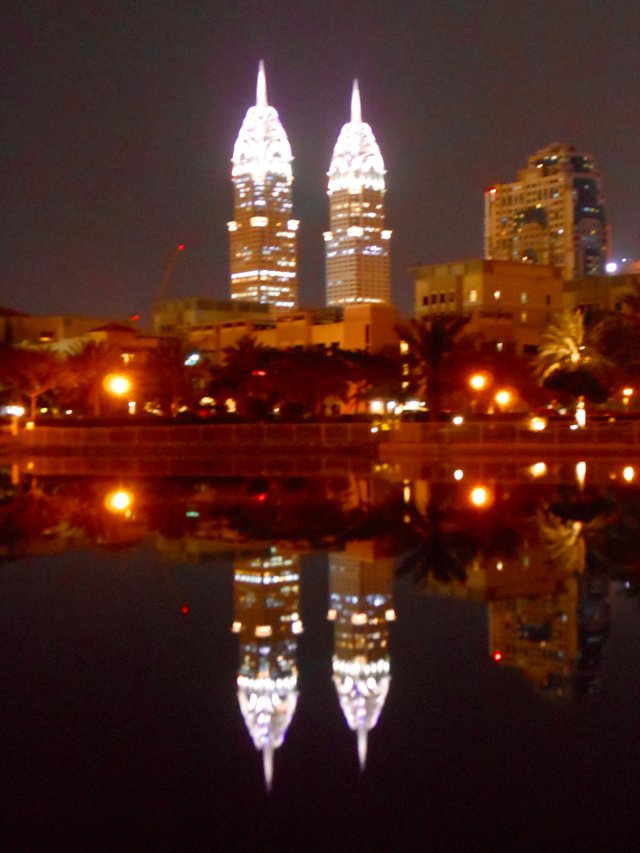
Reflections that make for a night-time Dubai fairyland.
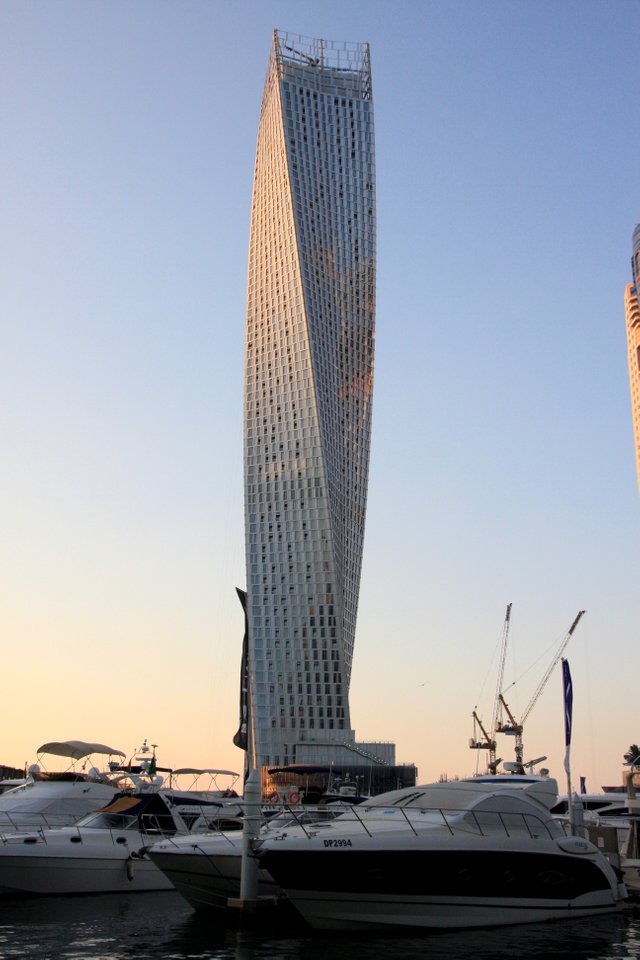
A skyscraper twists into the sky.
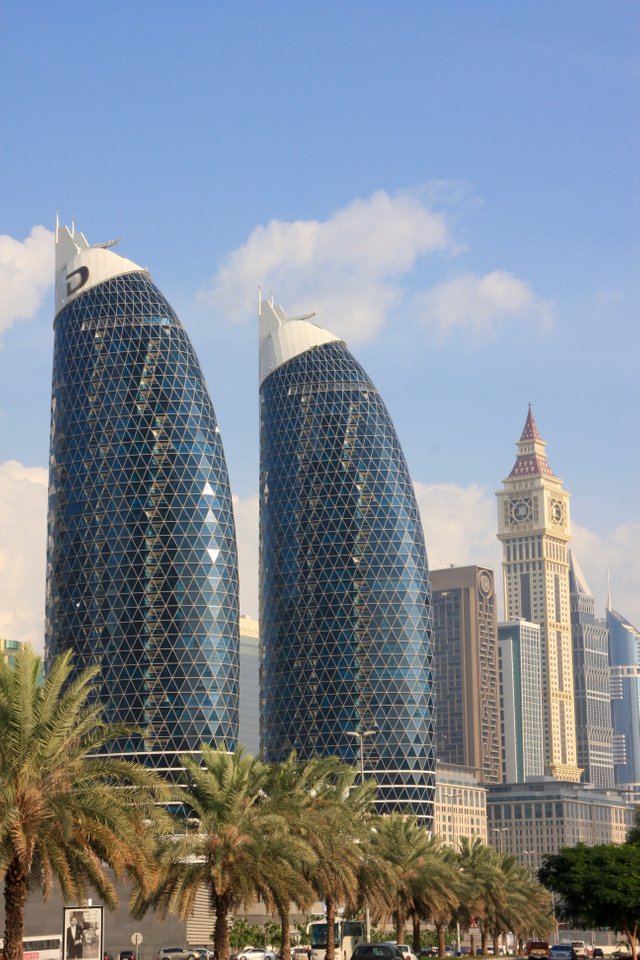
Twin skyscrapers that look like giant pupae.
There are Empire State replicas and some that look like imitations of Big Ben. Towering above all is the Burj Khalifa, the sun reflecting of its silvery exterior as it reaches up 829.8 metres, making it the tallest building in the world. Having dinner in its 124th floor restaurant is a dizzying experience.
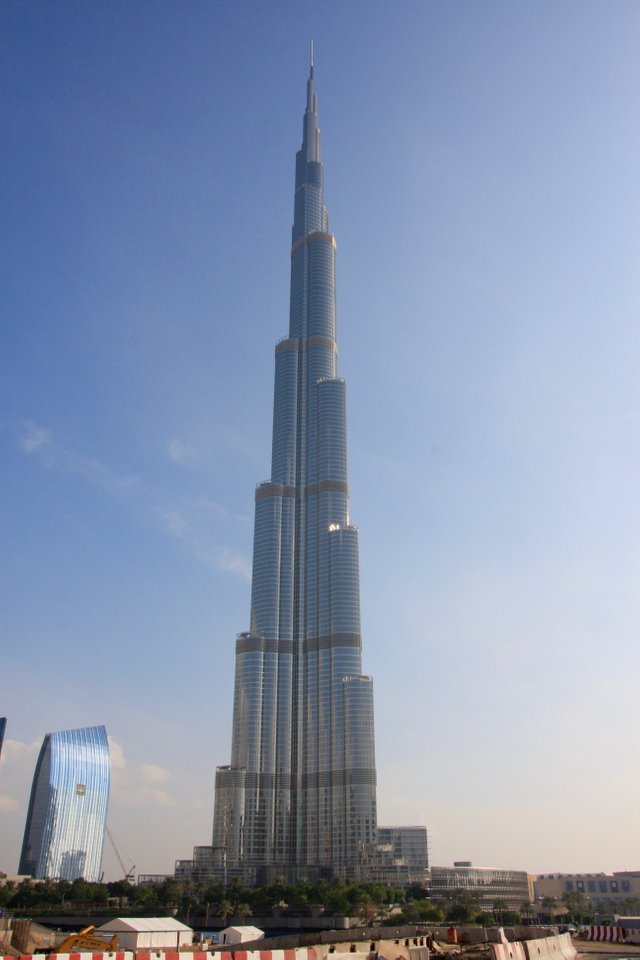
The Burj Khalifa.
Eating out is a big favourite with tourists and locals, so eateries are big business. At the opposite end of the scale are wild drives across the desert dunes with off-road vehicles kicking up clouds of dust.
Another offbeat attraction is camel racing on a course in the desert, where the ungainly beasts get spurred on by whip-wielding robots that are strapped to their backs and which get controlled from luxury SUVs that speed along the side of the race track.
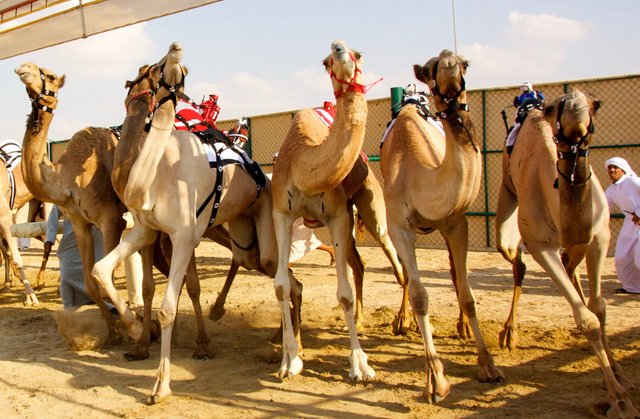
The start of a camel race in the desert.
A beautiful stretch of beach known as Jumeirah has a soft 5-metre-wide walkway and a 4-metre-wide jogging track fringing it for 14 kilometres, with shaded benches, kiosks, toilets, beach volley-ball nets, a kite-flying area and even mobile phone charging and wifi facilities along the way.
Further away among high-rise buildings lazes an artificial lake called the Marina on which water buses and taxis ferry visitors back and forth to walkways along its edge that are lined with restaurants, shops and hotels. Luxury boats and yachts are moored along its walls. Over weekends you see guests eating, drinking and dancing on their decks as they take them on pleasure cruises out to sea.
The Creek offers a delightful blend of old and new as motorised dhows that resemble old Arab sailing ships carry in loads of merchandise which they disgorge in the shadow of modern high-rise buildings. A museum on the banks of The Creek offers insights into life as it carried on for ages before modernity was sprung on the desert folk. The Creek has just been extended to form a banked waterway that loops back into the ocean.
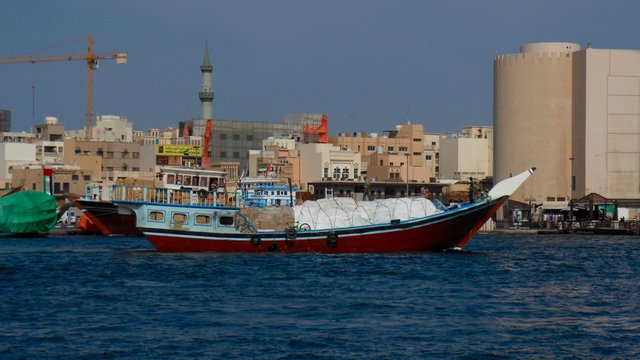
Dhow-like ships enter The Creek laden with merchandise.
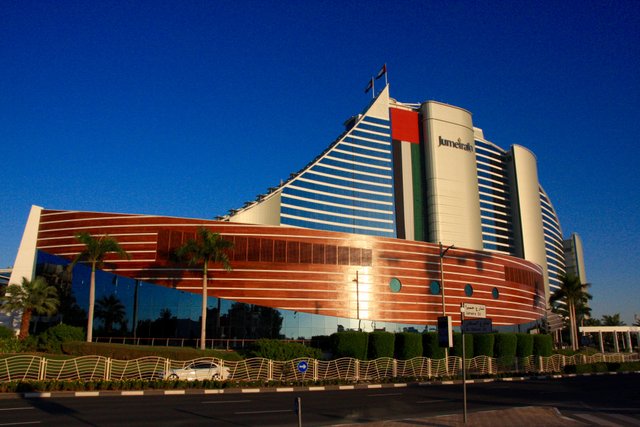
The Jumeirah Beach Hotel that has the shape of a ship.
To many visitors Dubai is synonymous with shopping. This is especially so in the summer months when scorching temperatures make even the sea too warm to swim in and activities are best limited to the airconditioned malls.
The various malls boast just about all of the world’s big retailers. Some have separate shops in the same malls offering clothing for babies, teenagers and grownups. I as a matter of interest asked about the price of an ornate pram and was startled to hear it cost almost half as much as a small car.
True to the city’s nature, there are also malls that cater for shallower pockets. One such is the Ibn Battuta, named so after the famed fourteenth-century Moroccan explorer who documented his travels throughout the Islamic world.
The city state is by far the most modernistic of the seven emirates that make up the United Arab Emirates that joined together nearly half a century ago. They all celebrate the occasion on the 2nd of December every year with patriotic dress and displays in the colours of the flag, and fireworks and shows and all kinds of cheerful events. All over you already see the pennants flying along the roads, at the entrance to hotels and above homes.
Dubai’s winning of the bid to stage Expo2020 is in the process of making it even more glitzy. Hard as that may seem, it simply adores being associated with innovation and progress, which is what the international showpiece aims both to promote and celebrate. Its stated aim with the construction already beginning to rise from a 438-hectare site in the desert is to dazzle the world.
Its whole inclination is to define itself in the superlative. Apart from the record-tall Burj Khalifa, there is the Burj al Arab that looks like the bulging main sail of a ship closely offshore and is variously claimed to be the world’s most luxurious hotel. A gold ring in the display window of the gold souk on the Creek is said to be the world’s biggest. The glass through which children and grownups alike gape at the sharks and multitude of sea creatures and fish in the Dubai Mall’s double-storey aquarium is likewise claimed to be the thickest in the world. The list goes on.
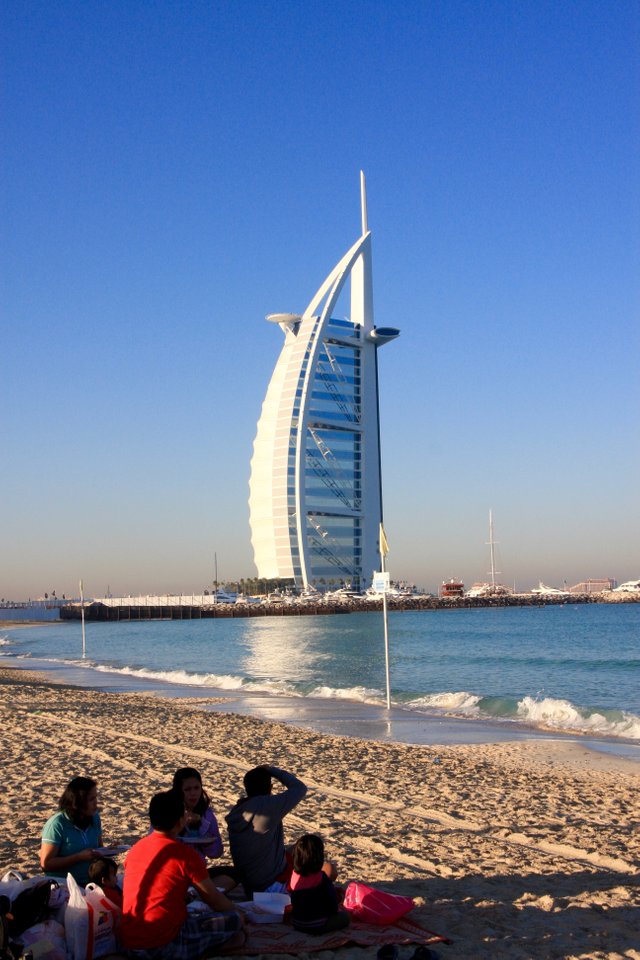
The Burj al Arab.
The ski facility in the Mall of the Emirates has real snow and live arctic penguins to lend its mountainscape authenticity. And then there is that man-made island reaching like an enormous palm into what from the Arabic side is known as the Arabian Gulf and from the Iranian side as the Persian Gulf.
Dubai can probably lay claim to offering one of the richest mixtures of nationalities. Only about 300 000 of its approximately two-million inhabitants are UAE nationals. The rest are made up heavily of Indians, Pakistanis, Bangladeshis, Filipinas and British. A school function I attended that put on show the food cultures of the countries the pupils’ parents came from had all of 49 stalls. The Russians were not far from the Ukranian stall, and so too those of the Indians and Pakistanis. Tiny Uzbekistan’s was right next to that of mighty USA.
There is also a pervasive contradiction underlying it all, which adds to the enigma that is Dubai.
At regular times of day, for instance, there rings out across the city the age-old sound of the muezzins calling the faithful to prayer. You see men, most in their traditional white dress and sandals, hurrying to the many mosques dispersed short distances from each other throughout the residential areas.
All over one sees women wearing the long black robe known as the abaya and the head-scarf that covers the neck and part of the head that is known as the hijab. A good many wear the niqab that covers the mouth and nose as well.
Among the crowds they mingle with in the malls and on the streets are many expatriate women wearing the tightest of shorts and jeans. On the white sands of the Jumeira beaches you see them wandering past women in the skimpiest beachwear.
It is all in the mix that makes Dubai the rare travel destination it is.
Do follow @poemsofthesage